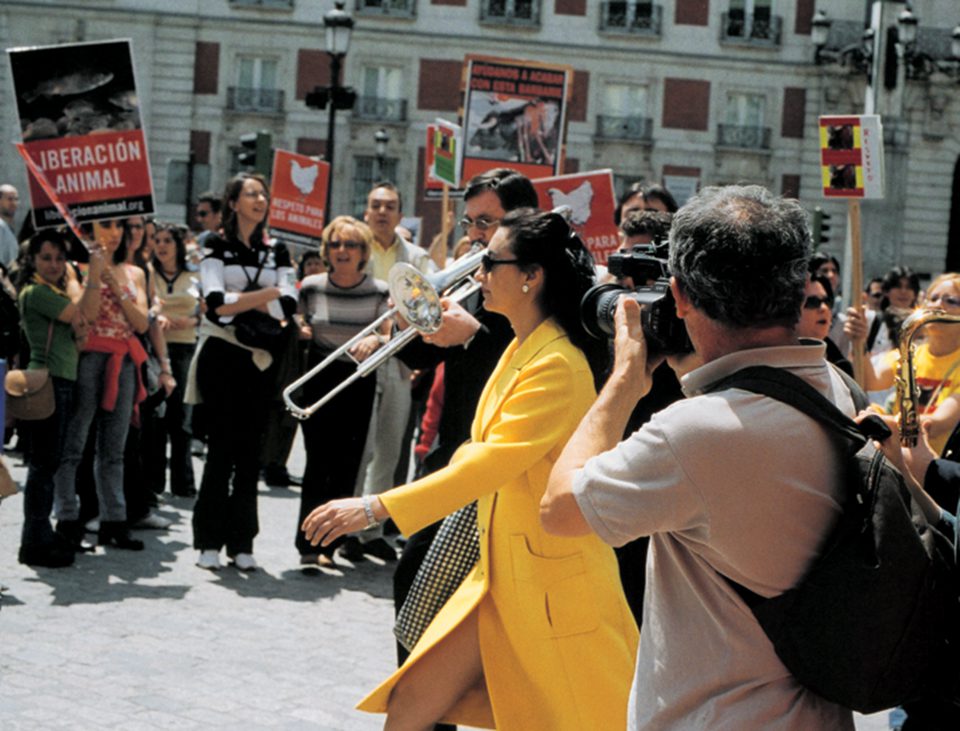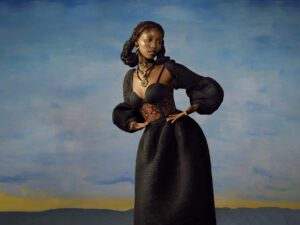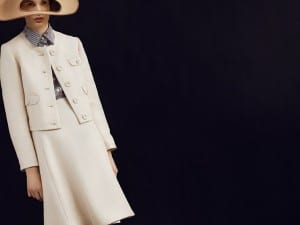A new exhibition, Transmission Interrupted at Modern Art Oxford, encourages a more considered attitude to both the physical and sociological influences of the twenty-first century milieu.
How does society affect the art we make? Can art alter our perceptions of the world around us? Does art serve a purpose outside of the ornamental and the academic?
Transmission Interrupted brings together 14 practicing artists from around the world to explore these far-reaching questions and notions. Senior Curator of Modern Art Oxford, Suzanne Cotter, explains: “The show really came out of work that’s being produced now, and a lot of discussions that have been happening around the function of art and its place in the world. Does it actually have a function or is it just something we look at and talk about? Or does it actually impact in some more tangible way, in the way we think, feel and do things?”
The exhibition is timely. We are in a state of flux, capitalist giants and the deities of property and financial services have disintegrated. Constantly warned that we are living in a war on terror, the peculiarities of waging warfare on an intangible emotion are disregarded in the sweep of doomsday news bulletins. Transmission Interrupted encourages reflection and consideration, how did we come to be in this position? Suggesting art’s function in making visible what is often overlooked, Cotter explains: “Even if we read the newspapers from five years ago, there would be things that people would be talking about that we would find surprising, even the fact that nobody smokes in restaurants anymore. The world continues to change but we don’t necessarily notice it. The artists are operating in this in-between space and they are often picking up on these subtle moments of change. Sometimes they do have quite a strong political import and other times they’re more about the nature of things, for example technology and society evolving.” For example, Sislej Xhafa’s elegant sick bus sees a mirrored bus pushed along Oxford’s Cornmarket Street, highlighting globalisation and tourism’s burdens on the visited cultures and the discrepancies of living standards in tourist hotspots of the world; the 5 Star paradise resorts of mod cons and plentiful feasts backed by shanty towns and slums.
The exhibition finds a common humanity in the work, recognising both our connections as a race and the fluctuations of our societies. “We exist in a society where there is, despite the amount of surveillance and monitoring that goes on, a certain degree of freedom of speech, freedom of movement and freedom of activity, and that’s just not the case in a lot of other places in the world.” Born in Peja, Kosovo, and practicing in New York, Xhafa is symptomatic of the artistic diaspora represented in the exhibition. Other artists include Yto Barrada (a Parisian working in Tangier), Jem Cohen (an Afghan working in New York), and Jimmie Durham (an American working in Rome). Under displacements such as these artists seem better equipped to explore transitionary spaces because they are in a transitionary space between visitor and native. They recognise “subtle undercurrents to do with identity, longing and how you find a voice in the world or in society. In some ways, the work challenges pre-existing ideas about things, it’s about presenting different positions and different viewpoints.” It takes someone looking at a situation with fresh eyes to present a renewed interpretation. These transitionary locations (and our obliviousness to them) are what much of Transmission Interrupted is about.
Exhibiting a vast range of nationalities together encompasses an international interpretation, bringing it back to the level of the individual, by inviting the viewer to empathise with the artist and appreciate a different viewpoint, set aside from their own culture. Yto Barrada’s work on property speculation in Morocco addresses concerns for both the natural habitat as well as an encroachment on the meeting places that used to exist between public and private. “It’s eradicating the natural private public places where people feel a certain freedom to gather together and have a social exchange. In this country we possibly would approach it in a different way. The public will see the way artists actually respond to their very specific contexts, but from out of that context they can create something that’s understandable more broadly.”
With terrorism a precedent of our times, it is unsurprising that it has become a dominant feature in artworks, but Transmission Interrupted explores the indirect, often overlooked implications in terms of our own lives and those around the world. As a filmmaker, taking his work and his inspiration from street life, Jem Cohen found New York’s post 9/11 limitations on filming restrictive to his normal practice. The result is Weights and Measures, profiling the streets of New York during a crackdown on public filming. “It’s a very beautiful film of people in the streets of New York and a montage of different bits of footage taken over a number of years, but it’s made in response to the fact that his camera was confiscated from him while he was filming one day on the subway in New York.”
In a contradictory manner, Yara El-Sherbini, perverts our interpretations of terrorism in the Western world with her performance to video piece, A Demonstration, which employs a recognisable educational format to playfully explore our perceptions through how we receive the information. El-Sherbini’s demonstration instructs the viewer on making a carpet bomb, aligning homemade terrorism with a Blue Peter, DIY attitude. The piece becomes a visual pun, transforming into a literal carpet bomb, and encourages us to look at the usual staid attitude to terrorism with an apt irony and playfulness with language. Again, the work enables the audience to stand back and consider the information with which they are so often bombarded; to recognise the absurdity of language and metaphor, which is often overlooked in the news bulletins. These observations form the premise of being an artist, “artists are not so set out to work in black and white; they’re more interested in the modulations of life.” Yara El-Sherbini’s further work in the exhibition includes the live performance of A Pub Quiz, a format that El-Sherbini has taken to Tate, IKON and Arnolfini. El-Sherbini’s art is both playful and provocative, encouraging us to question our humour and interpretations of events. Again, this is what Transmission Interrupted is about. Bringing this humour and beauty into art is hugely important for Cotter: “It’s not all about negativity, we’re offering another way of being beyond the world in which we live.”
Transmission Interrupted brings together human experiences, inviting reflections upon these interruptions, large or small, which are so often overlooked. It embraces the spirit of art to provide not just an escape, but a greater understanding of the nature of humanity, and encourages empathy in the audience. “You think of art as a kind of emancipated space, it’s a free space for people; they’re not having to think about paying their bills, or who’s following them,” but for Cotter the most exciting aspects of the exhibition are the links between the works. “There’s going to be some wonderful work in the show. I think it will stand out and what I’m looking forward to is the way that people might go from one piece to another and see how they relate to each other within the framework of the show.”
Modern Art Oxford was showing Transmission Interrupted from 18 April until 21 June 2009. The exhibition was accompanied by a programme of performances, talks and a fully illustrated book. www.modernartoxford.org.uk.
Pauline Bache





